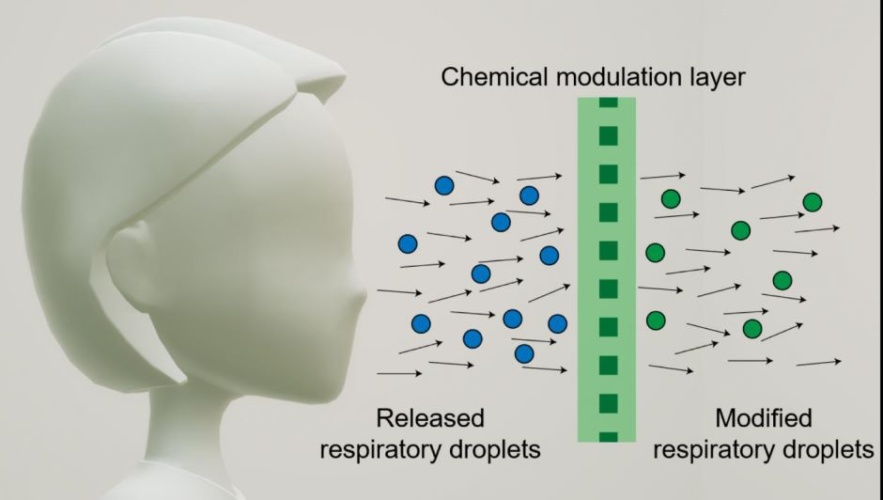
By simulating inhalation, exhalation, coughs and sneezes in the laboratory, the researchers at Northwestern University in Illinois found that non-woven fabrics used in most masks work well to demonstrate the concept.
MORE ON THE ENGINEERING RESPONSE TO COVID-19 HERE
A lint-free wipe with 19 per cent fibre density sanitised up to 82 per cent of escaped respiratory droplets by volume. Such fabrics do not make breathing more difficult, and the on-mask chemicals did not detach during simulated inhalation experiments. The research is published in the journal Matter.
"Masks are perhaps the most important component of the personal protective equipment [PPE] needed to fight a pandemic," said Northwestern's Jiaxing Huang, who led the study. "We quickly realised that a mask not only protects the person wearing it, but much more importantly, it protects others from being exposed to the droplets [and germs] released by the wearer.”
Huang is a professor of materials science and engineering in Northwestern's McCormick School of Engineering. Graduate student Haiyue Huang and postdoctoral fellow Hun Park, both members of Huang's laboratory, are co-first authors of the paper.
"Where there is an outbreak of infectious respiratory disease, controlling the source is most effective in preventing viral spread," said Haiyue Huang. "After they leave the source, respiratory droplets become more diffuse and more difficult to control."
Although masks can block or reroute exhaled respiratory droplets, many droplets and their embedded viruses still escape. From there, virus-laden droplets can infect another person directly or land on surfaces to indirectly infect others. Huang's team aimed to chemically alter the escape droplets to make the viruses inactivate more quickly.
Huang sought to design a mask fabric that: would not make breathing more difficult; load molecular anti-viral agents that dissolve in escaped droplets; and do not contain volatile chemicals or easily detachable materials that could be inhaled by the wearer.
After experiments, Huang and his team selected phosphoric acid and copper salt. According to Northwestern, these non-volatile chemicals were appealing because neither can be vaporised and then potentially inhaled and both create a local chemical environment that is unfavourable for viruses.
"Virus structures are actually very delicate and 'brittle,'" Huang said in a statement. "If any part of the virus malfunctions, then it loses the ability to infect."
Huang's team grew a layer of a conducting polymer polyaniline on the surface of the mask fabric fibres. The material adheres strongly to the fibres, acting as reservoirs for acid and copper salts. The researchers found that even loose fabrics with low fibre packing densities of about 11 per cent, such as medical gauze, still altered 28 per cent of exhaled respiratory droplets by volume. For tighter fabrics, such as lint-free wipes, 82 per cent of respiratory droplets were modified.
Huang hopes the current work provides a scientific foundation for other researchers to develop their own versions of this chemical modulation strategy and test it further with viral samples or even with patients.




Project to investigate hybrid approach to titanium manufacturing
What is this a hybrid of? Superplastic forming tends to be performed slowly as otherwise the behaviour is the hot creep that typifies hot...